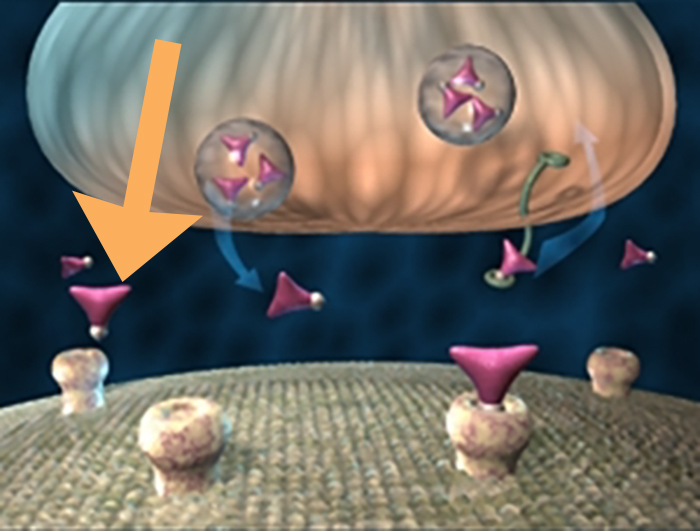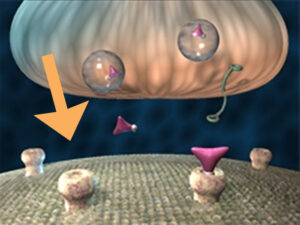SSRI-induced serotonin depletion™Part 2Drugs that work with neurotransmitters The only way to increase the synthesis Figure 1: Low synaptic serotonin levels induced by SSRIs on a modified normal diet represent a hyposerotonergic condition where there is inadequate serotonin binding to the post-synaptic receptors. The potential impact of R&R on SSRI-induced serotonin depletion:
Figure 2: Reuptake inhibition (yellow airplane) blocks serotonin reuptake causing an increase in synaptic serotonin due to a redistribution of serotonin from the presynaptic neuron to the synapse. Figure 3: The serotonin molecules in the pre-synaptic neuron are safe from enzymatic metabolism by the monoamine oxidase enzyme (MAO). Serotonin redistributed into the synapse by SSRI drugs is exposed to the MOA at an increased rate. This increased serotonin metabolism (breakdown) depletes serotonin, inducing a hyposerotonergic condition.. When SSRI-induced serotonin depletion is great enough on a normal diet, a hyposerotonergic condition relating to serotonin precursors or cofactors occurs. Illustrations courtesy National Institute of Drug Abuse division National Institue of Health
Figure 1: Low synaptic serotonin concentrations (orange arrow)
Figure 2: Reuptake inhibitors (orange arrow) increase synaptic serotonin.
Figure 3: Increased synaptic (outside the neuron) serotonin contact with the MAO and enzymes induces serotonin depletion (monoamine RND™). |



